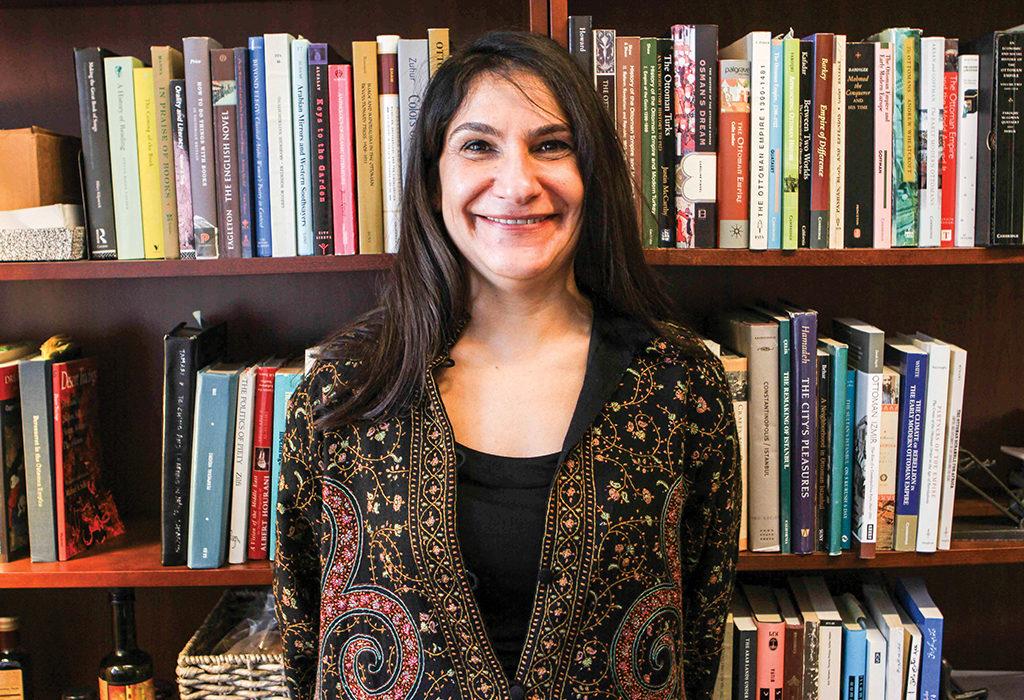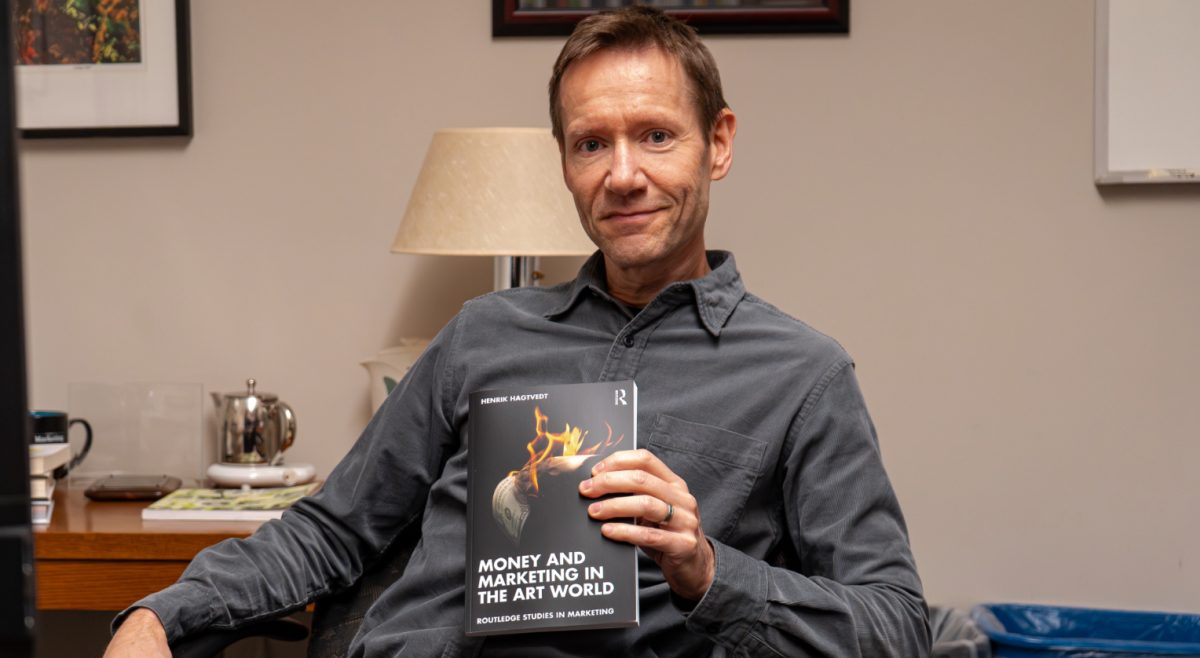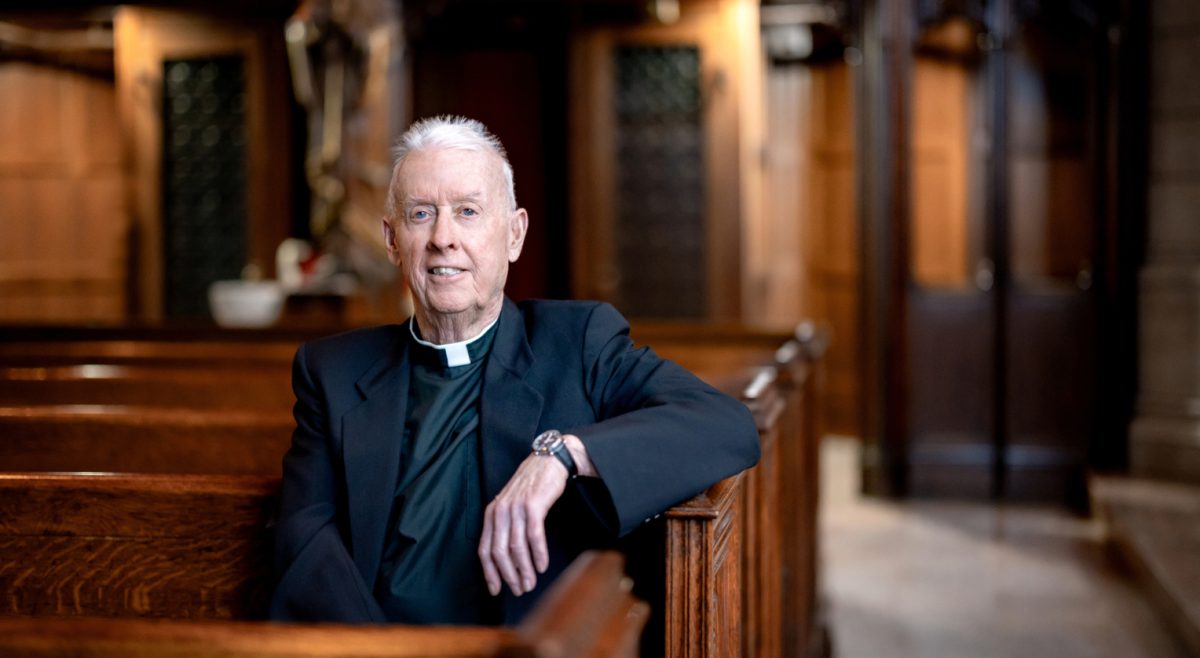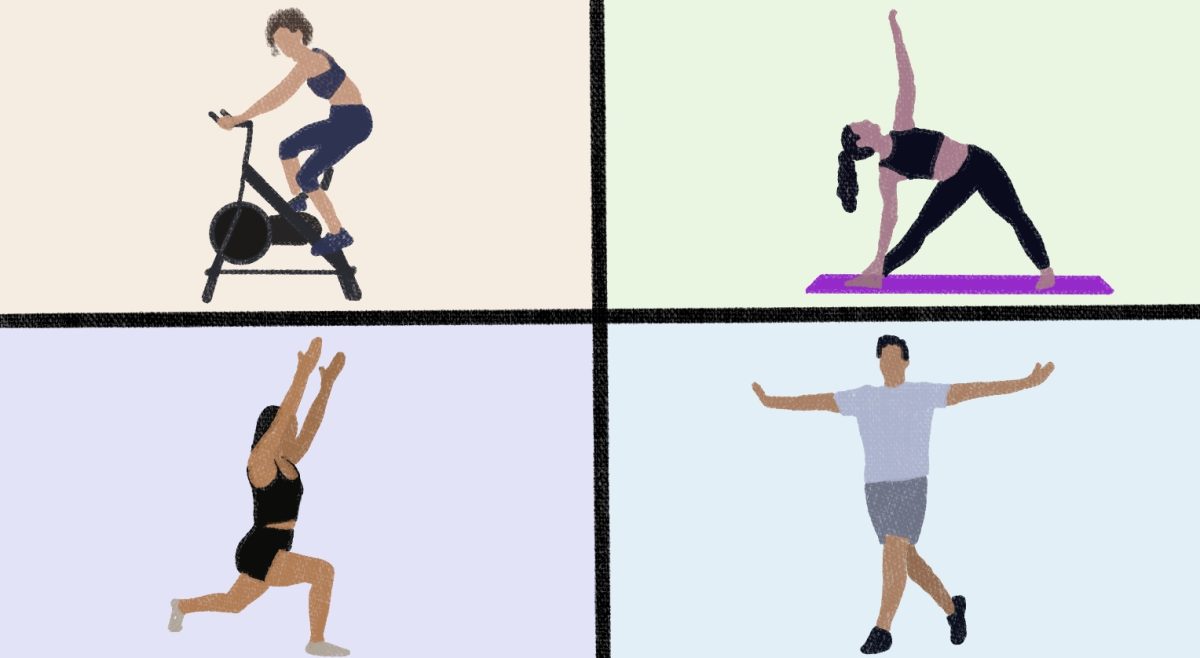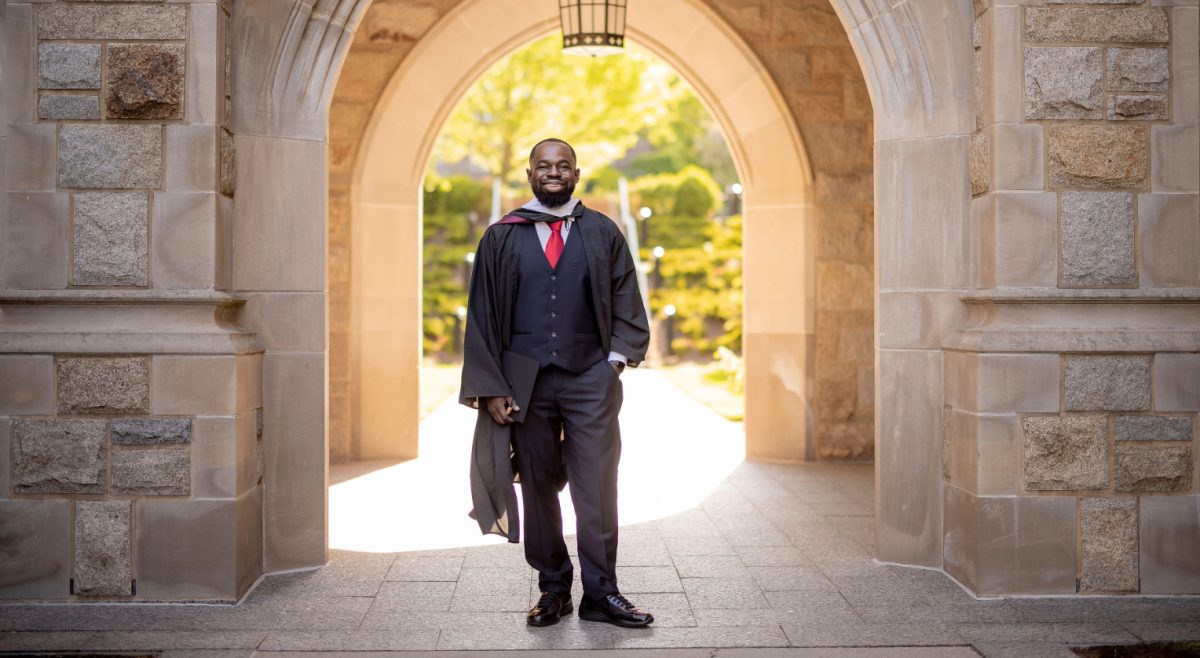Born in Nablus, part of the West Bank, Dana Sajdi’s first childhood memory is of her mother packing an onion in her backpack to go to elementary school, because it was believed to be an antidote to tear gas. Peculiar to outsiders, this practice was regarded as normal, as tear gas from public protests against the Israeli army were regular.
But Sajdi, a Boston College history professor, takes pride in how she has reconciled the experience of her upbringing.
“My first accomplishment is that I managed to go through all these contexts of political instability and almost danger, and come out of it unscathed,” she said. “I live a normal life, I don’t carry that with me to class, and I am able to make a safe environment for my students.”
As an undergraduate, Sajdi studied sociology and theatre at American University at Cairo.
“I did cartwheels to avoid the history requirements,” Sajdi said.
Based on her experience with it in high school, Sajdi thought history was strictly the memorization of names, dates, and battles. She graduated without a single history credit. But her aversion to history would do a cartwheel of its own.
One day toward the end of her time as an undergrad, Sajdi passed a student demonstration on the way to class. They held signs that said “Saladin, the liberator of Jerusalem: Kurdish and Palestinian students unite!”
The protesters’ signs were referring to An-Nasir Salah ad-Din Yusuf ibn Ayyub, known as Saladin, the first sultan of Egypt and Syria from 1174 until his death in 1193, who led the Muslim military campaign against Crusaders and, in 1187, took back control of Palestine, including Jerusalem.
Saladin was a Sunni Muslim of Kurdish ethnicity. His legacy was somewhat forgotten as the Middle Ages progressed but in 1825, Sir Walter Scott published The Talisman, a historical novel set at the end of the Third Crusade that portrays Saladin as a 19th-century liberal European against whom the Crusaders respectfully toil.
This westernized image was adopted by modern day Arab nationalists, and Saladin’s strife against the Crusaders is considered by some Arabs to be analogous to their current struggle against Zionism. As a result, Saladin is frequently thought of as exclusively Arab and his Kurdish ethnicity is often overlooked.
She was upset to realize that the history she had learned in school was appropriating Saladin for Arab nationalism and Arab-ness.
“It was then that I decided I must do history because I wanted to discover the truth,” Sajdi said.
Unlike her peers, when Sajdi entered graduate school, she did so as a student of history in earnest for the first time. In a moment that would come to characterize her brand as a historian, one thread of her study presented an unexpected challenge.
Sajdi wanted to do a project on a non-elite, everyday figure in the early Islamic period. She found no such people covered in any of her sources, leaving her dejected and disappointed. But one day, a footnote led Sajdi to an Ottoman barber who wrote a history book, a figure she never expected to encounter in formalized history.
Outside her coursework, she taught herself Ottoman history and studied Turkish. She ended up writing her dissertation on commoners in 18th-century Islamic history. It was through an accident of history itself that Sajdi discovered and pursued her field of expertise.
Sajdi’s journey to BC has been wayfaring as well. Her first job after graduate school was at Concordia University in Montreal. Sajdi admired Concordia because the diversity in her students’ age, culture, and socioeconomic class excited and challenged her.
“[I] struggled even to pronounce all the names,” she said.
Sajdi then received fellowships at Princeton and in Berlin. She also “did little stints” in Malaysia and Islamabad, traveling both for work and personal reasons.
She received the job at BC while living in Islamabad in 2007. Her visa was held up because she had visited and studied in Syria so many times and she resorted teaching from Pakistan, as a graduate student coordinated class and she communicated directly with students via email, until she could get stateside.
Sajdi’s intellectual endeavor seeks the human change that surrounds the emergence of new media and literary genres. Her major works take these emergences and use them as doorways to the social, economic, and political changes that influence them.
“I am not interested in a new genre merely because it is beautiful. I am interested because of the emergence of the new group of people who are speaking in this medium. Who are they? How are they using this to register themselves in the social space and put themselves out there?”
Her first publication as a graduate student was about a female poet in the 18th century who was composing in the male form. Her aim in this work was to find the background that stimulated the uniqueness of the artist and allowed her personal genius the opportunity to flourish.
Her first book, The Barber of Damascus, posed a similar question about the historical changes— social, economic, and political—that encouraged an 18th-century barber to write a book about history.
Sajdi is “always looking for new medias and new forms of expression to see a much bigger phenomenon around it,” a practice that she carries into her classroom.
Last spring she taught a course in which a podcast, “The Ottoman History Podcast,” acted as the textbook. The podcast interviews historians about their works as the means through which it presents the material. Sajdi’s goal in using this alternative text was to show students the importance and value of how ideas are researched and formulated as compared to merely how they are organized and condensed in a traditional textbook. Its producers even came to campus and did an episode on the students of the class.
Sajdi feels that podcasting could be the new media of today, reflecting the larger historical phenomena of our present. She is a self-described “podcast junkie” (talk to her about “Serial” or “99% Invisible”), and is fascinated with the diversity of podcast offerings. She loves the convenience that makes podcasts intertwined with our sensory experience: Because they can be selected and listened to anywhere, anytime, the sounds of the podcast become part of the everyday occurring around us.
She also foresees herself making her next work digital, most likely in the form of a podcast. After all her study on new historical medias, she finds herself “craving to experiment” with one herself. In the pre-modern Islamic world, communication, a vocal embodiment of ideas, was a core principle of education. She feels this same principle in the idea of educational podcasting.
“There is something physical about podcasts, an intimacy in the voice, accent, and intonation that I find would add to scholarly communication,” Sajdi said. She is still formulating this idea, but finds a seamless transition, an inevitability, in her exploration of it. She asserts that scholarship has always been vocal. Her study on the importance of new medias has led her to active legitimization of our contemporary ones.
“My aim with the project, besides the story I will tell with it, is to convince my colleagues that podcasting is a worthwhile scholarly project,” she said.
Sajdi’s ability to seek unique routes extends to her approach to teaching. She tries to get her students to reevaluate what a historical fact even is, and how that often depends on who gets to explain history and why. She wants her students to understand our ever present and active role in shaping our own history.
“It’s not as though history is just waiting for us to capture it,” Sajdi said. “History doesn’t happen: we make it. We make it by what we choose the facts to be and how we give significance to things.”
Her approach seems to be working: Siobhan Green, MCAS ’21, is taking Sajdi’s freshman core course, Religious Diversity in a Muslim and Secular World, and says that because the course commenced with questions like “What is religion?” that shook and broadened her understanding of the most basic and deeply rooted cultural concepts. “I am often am amazed at the breadth of information I have learned just simply from contributing to the discussion,” she said.
Victoria Mulkern, MCAS ’18, has taken more than one of Sajdi’s courses and finds that Sajdi’s infusion of culture into each historical topic broadened her perspective beyond the names-and-dates approach to history that Sajdi herself disliked growing up.
Sajdi’s special place as an creative part of the BC community is not overlooked by her colleagues. A BC professor of medieval history who once mentored Sajdi, Robin Fleming stresses how important it is for Sajdi’s students to see a historian that is both innovative and successful. She is both someone who thinks outside the box of her field and is “a big deal” within it.
Sajdi’s active take on history mirrors her view on the situation in Syria. Sajdi knows Damascus very well because of the time she spent there researching her dissertation on the aforementioned Barber. She also has family in Jordan and Damascus, and summered there in the ’90s. Before the war, Damascus and Aleppo were her favorite places to take people, because their beauty and richness are underrated.
The breakout of war in Syria was unexpected for Sajdi. Having grown up and always lived among political turmoil, she never thought that conflict would keep her away from anywhere, and is upset that she has been unable to return since 2011.
A major tragedy of the civil war for Sajdi is the destruction of heritage. Places like Aleppo and Damascus are special because of their age. Some of the oldest settled cities in the world, they possess what Sajdi calls “accumulated civilization.” Islamic history is only the top layer of a vastly interconnected history that exists simultaneously there.
Before the war, downtown Aleppo was dotted with historical merchants’ hotels and markets, and was home to one of the largest and most important covered bazaars in the world. It was also the location of the world’s first coffee shop. Much of that is now destroyed, as combat and heavy bombing took root in the heart of the city.
Among this conflict, Sajdi feels that it is her duty to preserve Syria’s richness in the remembrance of young people.
“People of your generation only know Syria as a warzone—they only know it from documentaries or news reports. It becomes an image of only war, destruction, and cruelty, and a battle between the regime and the rebels and ISIS,” Sajdi said. “For me these images are very recent. They don’t constitute my understanding of Syria.”
Sajdi feels that it is her obligation to educate people about the true Syria in every way that she can, in and out of the classroom. The final project for students in her freshman core class, called their “reconstructive project,” is to use records to write a history of a now-destroyed building in Aleppo with a focus on its non-Muslim background.
Sajdi feels she must write her next book on Damascus. Accentuating the long-term history of the city, it will target a reader beyond the professionally academic audience so as to expose Syria’s layers of accumulated culture, plurality, and diversity that are being physically and mentally erased by the current war.
In seeking to preserve a whole image of Syria, rather than the momentary, if jarring, ones of today, Sajdi reminds us of our active role in forming historical remembrance and of the importance of keeping history alive even when it is quite literally under attack.
Featured Image by Kaitlin Meeks / Heights Editor

